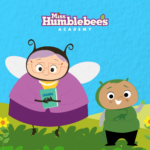Below: Teaching problem solving strategies for kids is a fantastic way to ensure that our children can face difficult tasks and decisions with confidence, both as children and when they become adults.
In the course of their lives, our kids are going to come across many situations that require problem solving. From something as simple as deciding what to make for dinner to more complex situations like deciding who to hire for a position out of a pool of qualified applicants.
By teaching problem solving strategies to kids early in life, we can give them the tools they need to face decisions that require careful thought.
Problem Solving Strategies for Kids

Brainstorming
Often the first step in any situation is to come up with a list of possible solutions. Teaching kids to brainstorm will help them expand their thinking and come up with a variety of ideas for any situation.
Practice brainstorming with your child for any small problem you come across. Perhaps there’s a mess in the living room or you’re missing an ingredient for dinner. Take turns coming up with possible solutions and accept any that your child comes up with, even if you know they wouldn’t work. An important part of the brainstorming process is that “anything goes.”
If your child has difficulty brainstorming, try some Creative Thinking exercises. According to Scholastic, “Creative thinking is the ability to look at a problem in many different ways. This might involve seeing a different way to do something, generating new ideas, or using materials in unique ways.”
Play a game by naming an object and coming up with new ways to use it (i.e. a banana becomes a telephone).
Expand your child’s creative thinking by doing a painting project that uses paint in a variety of ways. You can offer paint brushes, Q-tips, a toy car or marble to roll through the paint, frozen paint (use an ice cube tray); the possibilities are only limited by your imagination. Once you’ve offered several options, your child will probably come up with some other ideas on his own.
Process of Elimination
After you’ve brainstormed a list of possible solutions, teach your child the process of elimination. This is not only a great strategy for every day problem solving, but also good to use while answering questions on schoolwork.
Teach your child to look at all possible solutions and eliminate the ones that would not work. Sometimes these will be obvious and other times you’ll have to help your child see why a particular solution wouldn’t work.
Critical Thinking
Once you’ve eliminated the obvious, you should have a small list of possible solutions. At this point, what you have left should all be viable solutions and it will be a matter of figuring out which works best in your particular situation.
One great way to do this is to create a Pros and Cons list for each solution. Once your child has each list created, she can look over them to figure out which one should be chosen. It may be a simple matter of counting which has the fewest cons and the most pros or it might be more complex and require your child to figure out which Pros list is strongest, regardless of number. Either way, this is a great strategy to help your child problem solve.
Your child will face many difficult decisions in life, but by teaching problem solving strategies early in life, you’ll give him the tools to face those situations with confidence.










